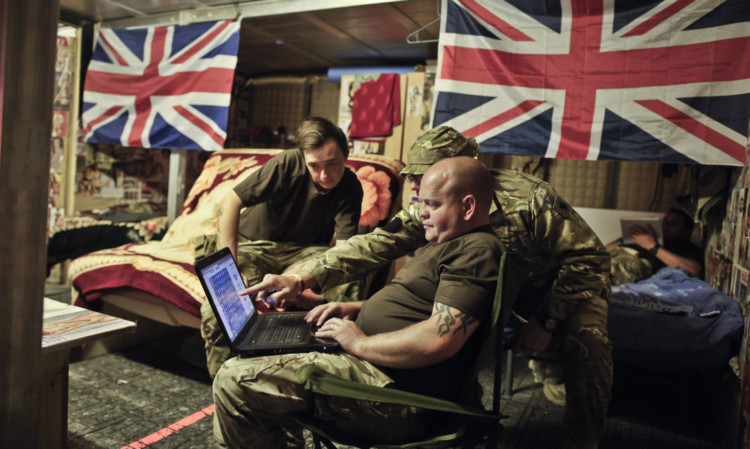An IT “failure” has left hundreds of Ministry of Defence staff at bases across the east of Scotland unable to email frontline troops in Afghanistan.
It is understood that overseas operations have not been compromised, however, routine correspondence is affected.
The problems began on January 6 and persisted throughout last week, according to a well-placed source.
The senior MoD employee revealed that staff were told to use unreliable telephones to contact troops until a server is repaired.
The source, who described himself as a “whistleblower”, asked not to be identified for fear of “repercussions”.
He said: “The MoD’s IT and computer system have been having problems since everyone came back to work on January 6. Each person has probably lost about two hours work a day since last Monday.
“The IT was down again on Monday. We lost about five hours. Obviously you multiply that by the amount of employees, how many man hours wasted, the money wasted.
“You’re talking hundreds of staff. What they’re saying is it’s the east coast of Scotland. So that’s the likes of Dunfermline, Rosyth, Leuchars, Redford, Dreghorn, Craigiehall.”
The MoD worker who was previously in the armed forces said the communication problems prevent them contacting colleagues in conflict zones.
He explained: “We can’t email troops in Afghanistan or anywhere deployed on operations. We’ve no electronic correspondence whatsoever. We can’t do our job because everyone relies on IT.
“We’ve been told to use phones but the telephone system is never 100%, because of the nature of where they are. It won’t impact on operations but between here and there, it’s correspondence and we can’t talk to them in emails. That’s a difficult thing.
“We’re all trying to do the best we can but it’s like giving somebody a spoon and telling them to dig a six-foot trench. We’ve got equipment that’s there which, at this time, isn’t suitable for the job we’re trying to do.”
The source said staff are losing patience with the IT contractor brought in to oversee the MoD’s IT system.
He said: “It’s apparently a server issue that has been getting worked on since last Monday. It was supposed to have been fixed but it went down again. They changed everybody to a different system but that has also gone down.
“We’ve phoned up and complained to the civilian organisation that’s contracted by the MoD to run the IT. If this was a big company potentially they could be losing millions of pounds but if it was a big company it wouldn’t happen. The MoD seems to be more accepting of it.”
A spokeswoman for Defence Equipment and Support (DE&S), the MoD department which oversees the IT system, confirmed there was “disruption”.
She said: “The MoD can confirm that a number of sites in Scotland experienced some IT disruption, however this was immediately identified and there was no disruption to frontline operations. Service has now resumed.”
